You can’t beat a down jacket for its combination of light weight and superb warmth. Often packable too, a down jacket is a great way to fight the chill whilst enjoying the outdoors.
The range of jackets available in the down category can feel overwhelming – but once you consider the type of activity you will be using it for as well as some key features – warmth, flexibility, budget and sustainability – it becomes much easier to decide. We've put eight of the best down jackets to the test, from leading brands and at various price points, so you can find a suitable match for your outdoor activities.
Jump to:
SQUIRREL_PLAYLIST_10144212
For wet winter strolls, browse the best waterproof jackets, tried and tested by our team.
Reviews edited by Rachel Howatson
Best down jackets for 2024
Fjällräven Expedition Pack Down Hoodie
Best for general use in autumn and winter
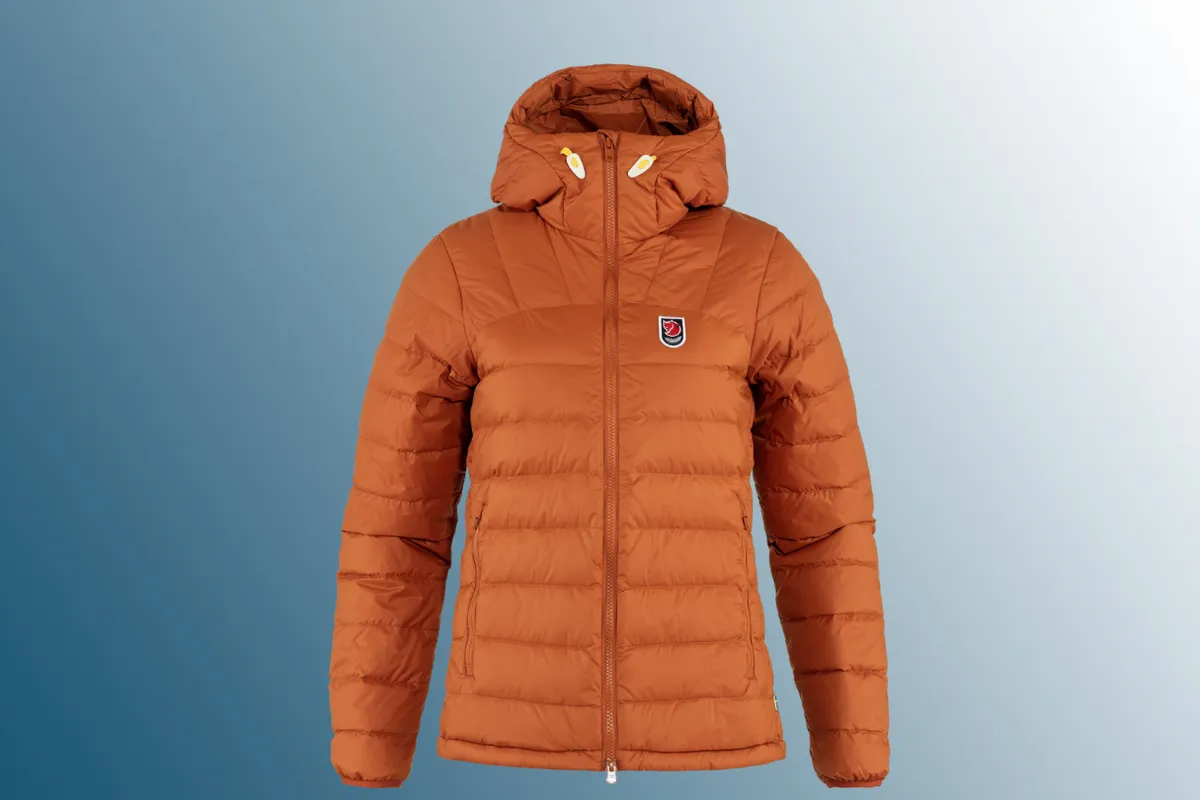
- Sizes W XXS-XL / M and M XS-XXL
- Weight 435g (women’s size S)
- Fill power 700
- Down type 90% goose, 10% feather
- Packable Yes, inside the inner pocket
Instant cosiness, a decent hood and strong eco-credentials, there’s plenty to love about the Fjällräven Expedition Pack Down Hoodie. On test, this design proved to be one of the better-fitting models, plus the two-way zip improves range of movement. A great option for hill walkers looking to stay warm on chilly hikes.
Thanks to a soft fabric and comfortable fit, this is a jacket you’ll keep reaching back for. It’s suitable for pretty much anything apart from the coldest and wettest days!
Such desirable puffer jacket qualities come at a cost, but if you’re willing to pay for a premium design, you’ll not be disappointed.
Pros: Looks good, strong eco credentials, warm and well-fitting
Cons: Price may be prohibitive for many, limited water resistance
More details in our full review of the Fjällräven Expedition Pack Down Hoodie.
SQUIRREL_13153143_107
SQUIRREL_13119117_106
RAB Neutrino Pro Down Jacket
Best for extreme cold
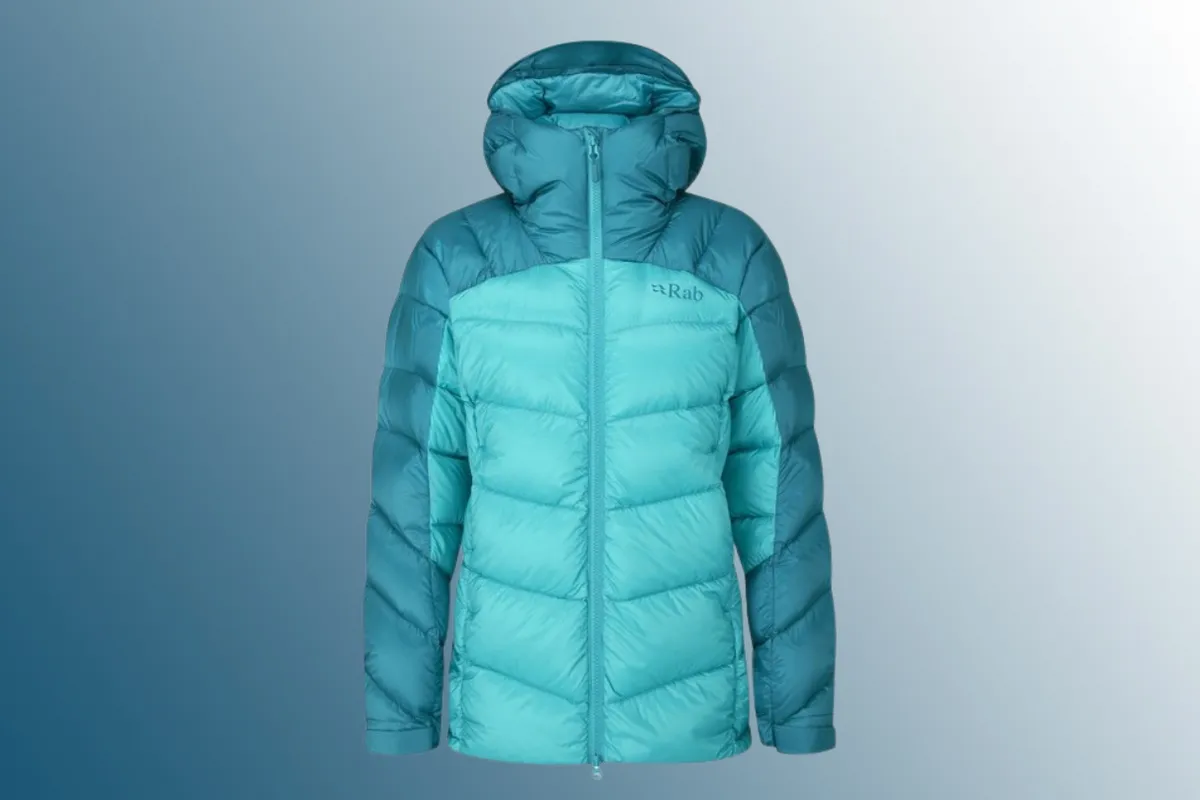
- Sizes W8-16/M
- Weight 502g (women’s UK10)
- Fill power 800
- Down type 800FP European Goose Down with Nikwax Fluorocarbon-Free Hydrophobic Finish
- Pockets 3
For serious and reliable insulation, the RAB Neutrino Pro Down Jacket is the way to go. Quite the investment, and perhaps bulkier than other designs, but you’re looking at a sleeping bag in jacket form here.
This puffer jacket is light to wear, despite being the ‘pouffiest’ on test, and there’s enough room for a fleece underneath. While it’s likely to make your chilly morning dog walks all the more enjoyable, the Rab Neutrino Pro really comes into its own in the mountains, or on walks in the peaks.
Another bonus is the waterproofing. The 800 fill power down is European Goose Down with a Nikwax Fluorocarbon-Free Hydrophobic finish which means the down doesn’t clump when wet.
Pros: Warmth and insulation, comfort, water-resistance
Cons: Bulkier, an investment
Read our full RAB Neutrino Pro Down Jacket review for more details.
SQUIRREL_13120517_107
SQUIRREL_13084710_106
Arc’teryx Cerium Hoody
Best for warmth on winter adventures
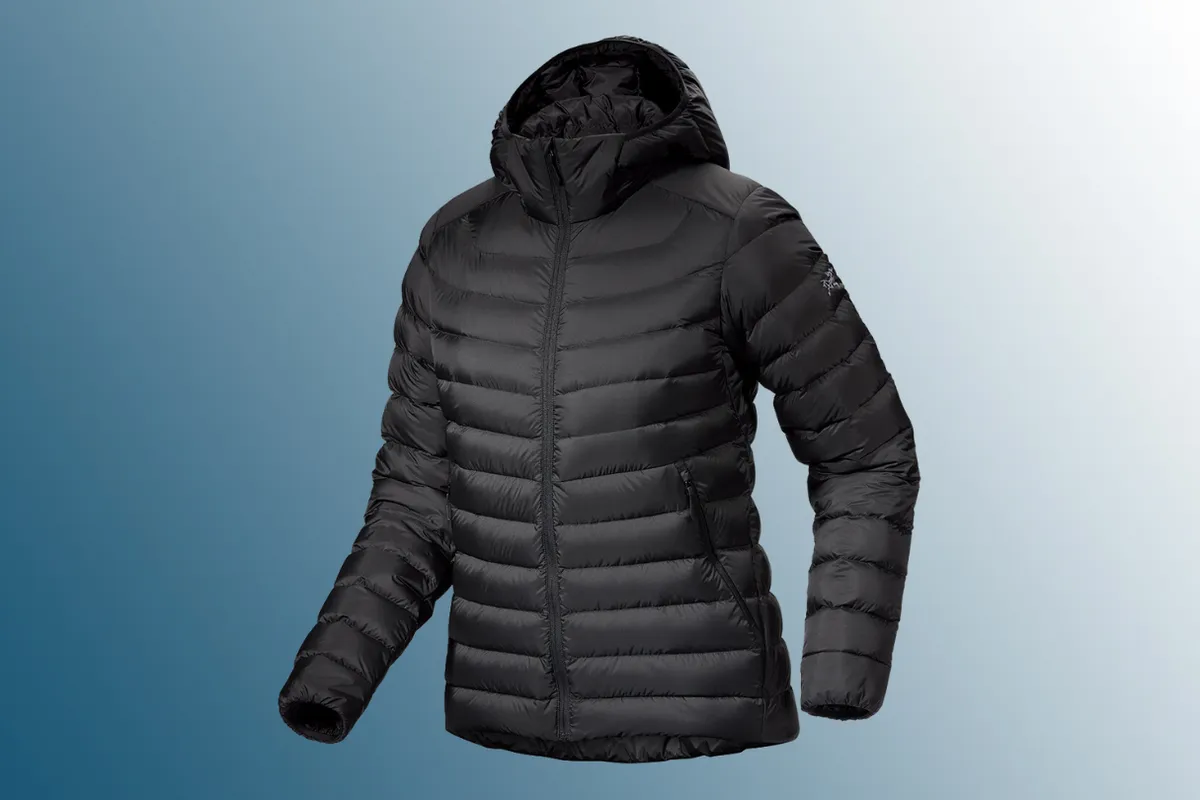
Sizes W XXS-XXL, M XS-XXXL
Weight 290g
Fill power 850
Down type Goose down as well as synthetic down
Packable Stuff bag included inside inner pocket, attached via cord
A great addition to your winter layering system, the Arc’teryx Cerium Hoody is a warm and classy-feeling goose down jacket. The generous stuff bag was appreciated on test, and we liked the puffer jacket’s ‘stashable’ nature. A great option for a ramble in the hills as you can pack it away with ease.
As for the shape, this jacket won’t suit curvier women. It felt snug on the hips, and we’d like to see Arc’Teryx offer a more female-friendly fit, but if you’re a fan of a close-fitting feel, it could work for you.
Pros: Warmth, good quality, easily stashable, clever mix of insulating materials
Cons: Shape won’t suit curvier women, no storm flap, zip feels flimsy
Read our Arc’teryx Cerium Hoody review.
SQUIRREL_13140465_107
SQUIRREL_13085487_106
Adidas Techrock Down Hooded Jacket
Best for changeable conditions
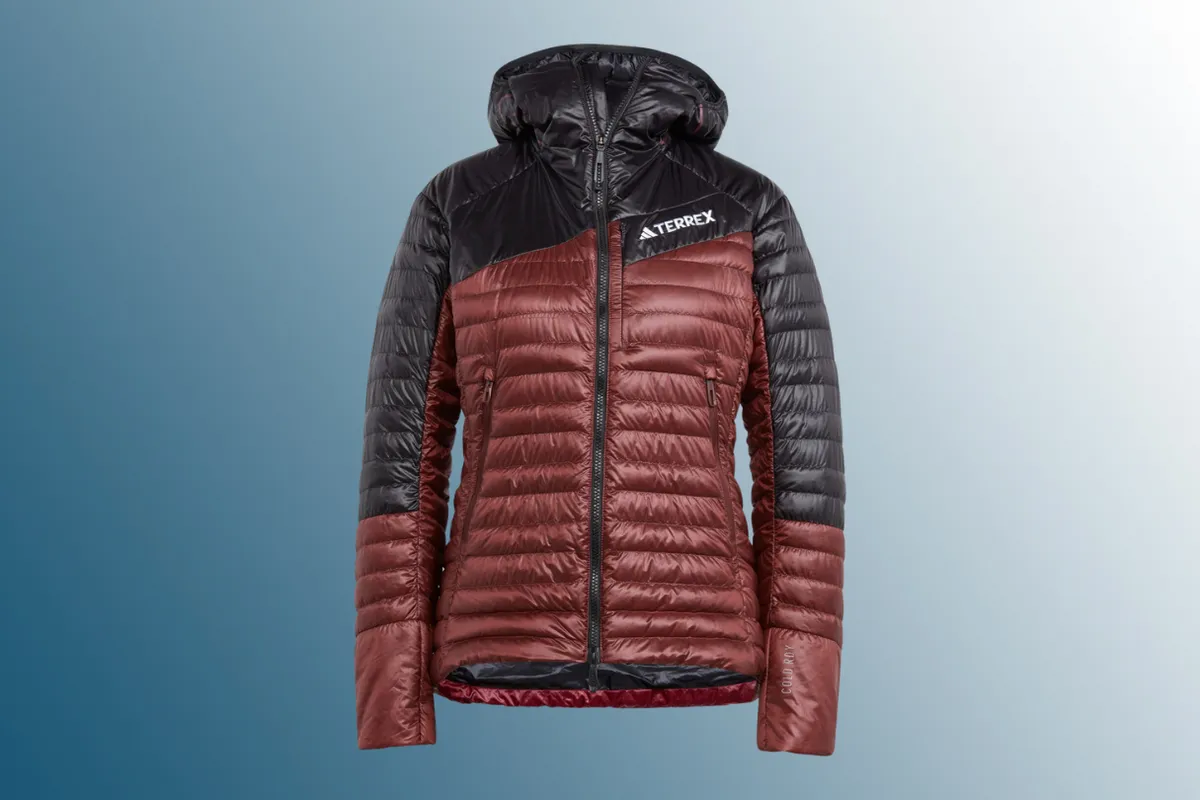
- Sizes W XS-XL, M XS-2XL
- Fill power 800
- Down type 90% goose down, 10% feathers. Bluesign certified Allied down.
- Packable yes, into one of the zipped pockets or one of the inner pockets
The Adidas Techrock Down Hooded Jacket was a hit on test. Soft, comfortable and flexible, with great attention to detail, this high-quality goose down jacket is a great match for mountain climbers. The hood would work well with a helmet, and there’s a toggle at the back for an even snugger fit.
You’ll want this jacket to hand if you’re out in changeable conditions as it feels tough enough for mountains yet light enough to stash away. Plus, we’re big fans of the style. You’ll want to wear this jacket again and again.
Pros: Superbly showerproof, warm, great fit
Cons: No inner zipped pocket
Head to our full Adidas Techrock Down Hooded Jacket review.
SQUIRREL_13136654_107
SQUIRREL_13084702_106
Mountain Warehouse Featherweight II Extreme RDS Down Jacket
Best for casual hikes and warmer weather
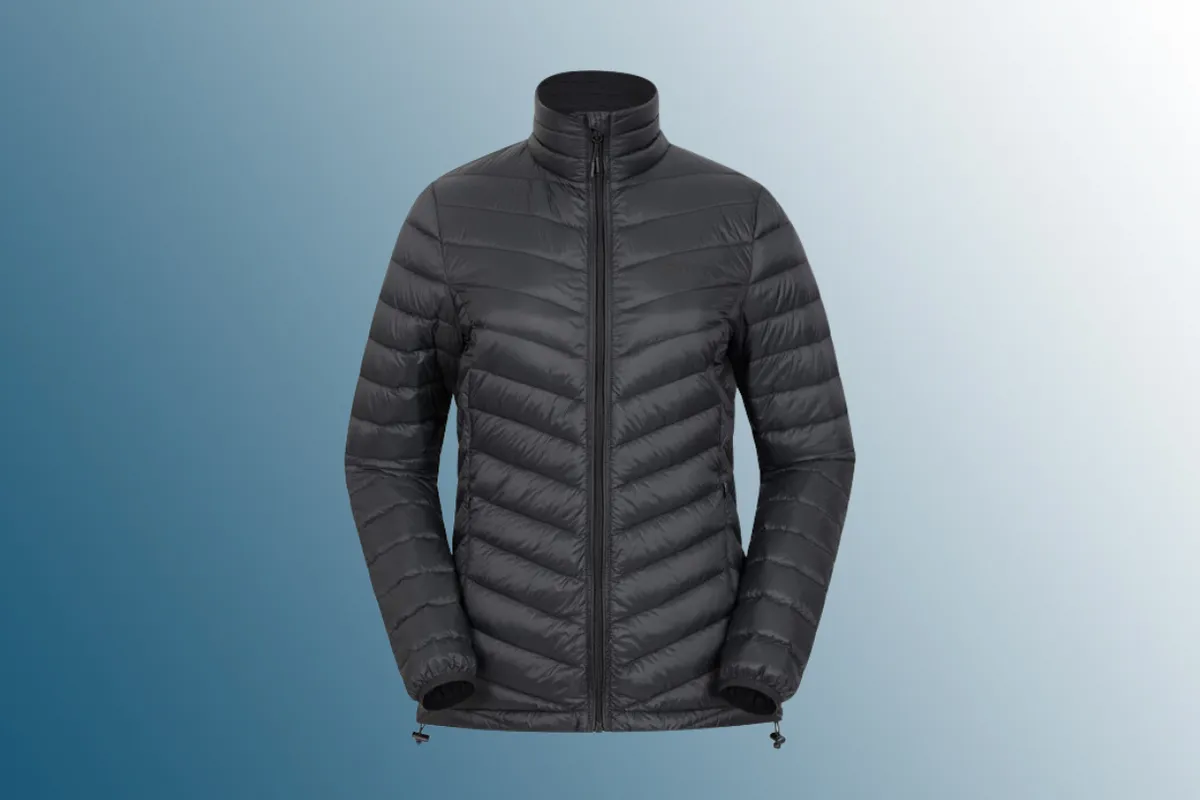
- Sizes W UK 8-22
- Fill power 600
- Down type 90% grey duck down and 10% grey duck feathers
- Face fabric 100% polyamide
- Pockets 4 pockets (2 zipped)
- Packable Yes, included stuff bag
At the more budget-friendly end of the scale is the Mountain Warehouse Featherweight II Extreme RDS down jacket. While it lacks the whistles and bells of some of the other jackets on test, this is a good option for an extra layer if premium features aren’t required.
With a 600 CUIN fill power, it wasn’t the warmest on test, but its lightweight and packable nature is sure to come in handy.
The fit was a little restrictive, so we’d recommend sizing up if you’re looking to layer up. This means it’s not the best option for active hikes and mountain climbing, but for irregular hikes in spring and autumn, or even cooler summer mornings, it’ll do the job nicely.
Pros: Price, water resistance, very packable
Cons: Only in black, no hood option, not as sustainable as others
For more details, read our full review of the Mountain Warehouse Featherweight II Extreme RDS Down Jacket.
SQUIRREL_13084701_107
SQUIRREL_13084697_106
Patagonia Down Sweater
Best for long winter walks
Check availability for men
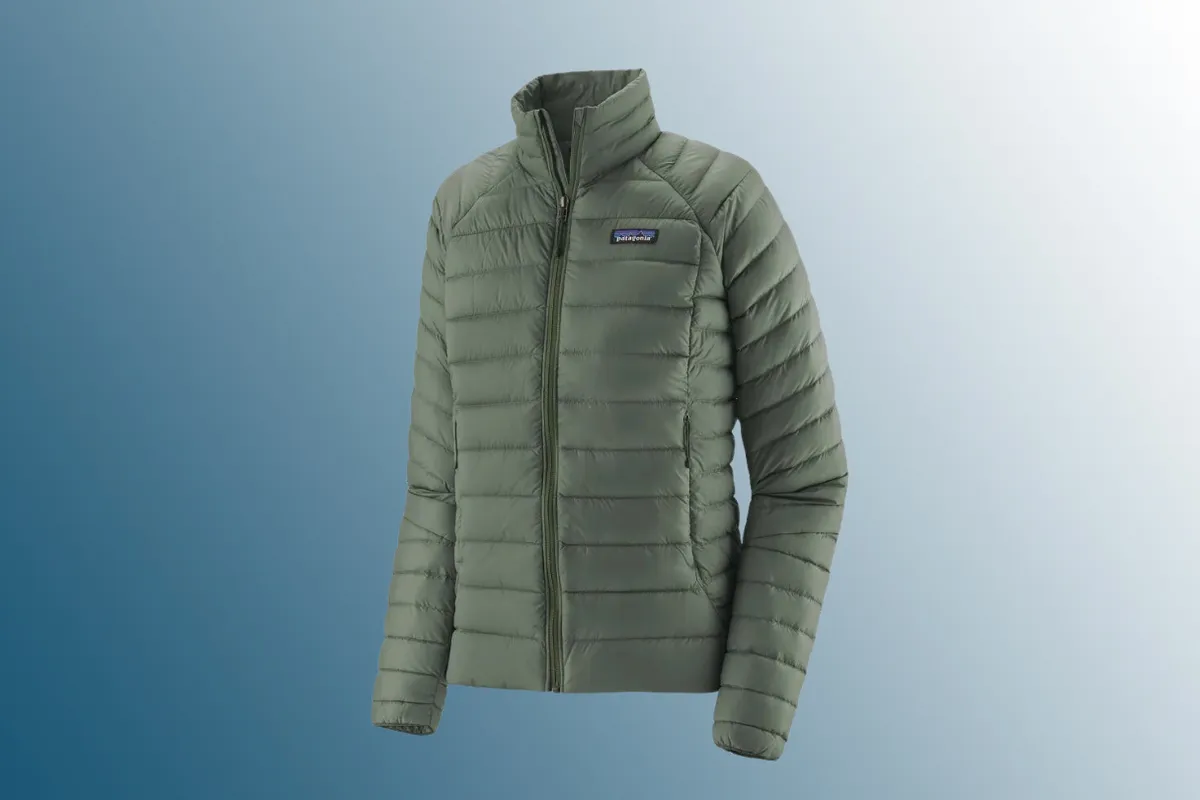
- Sizes W XS-XL
- Weight 292g
- Fill power 800
- Down type 100% Responsible Down Standard down certified by Control Union (RDS)
- Pockets 5
Patagonia’s Down Sweater is lightweight, warm and as usually the case with the retailer’s gear, stylish.
Overall the jacket is a nice fit, and there’s room for adjustment thanks to the hem’s cord and toggle.
If you’re worried about wear and tear, the jacket comes with some sticky fabric patches so you can fix up on the go. A really nice touch from Patagonia, and a nod to the brand’s focus on sustainability.
Pros: Looks great, warmth, light weight
Cons: No hood (on this model), snug on the hips
For more details, read our full Patagonia Down Sweater review.
SQUIRREL_13092471_107
SQUIRREL_13153184_106
Berghaus Tephra 2.0 Hooded Insulated Jacket
Best for hiking
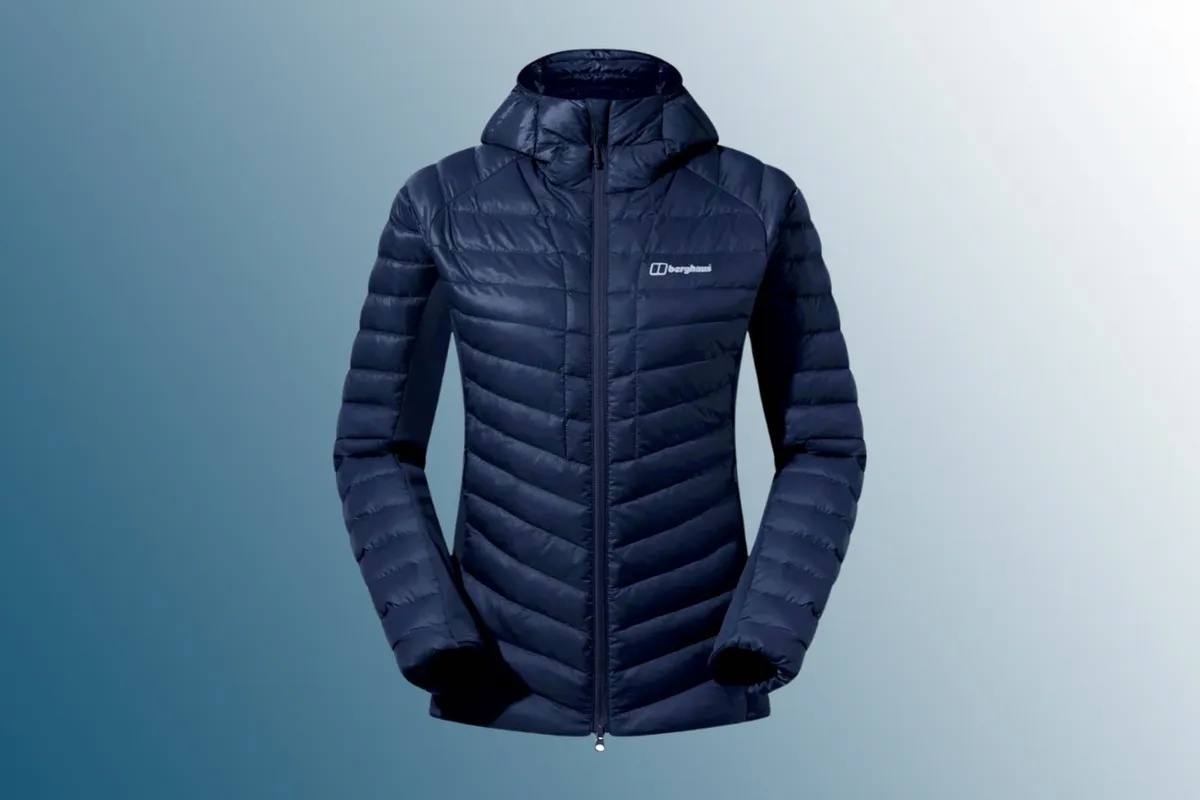
- Sizes W UK8-20, M
- Weight 388g (UK10)
- Fill power 700
- Down type 80% down and 20% duck feather
- Packable? No
The Berghaus Tephra 2.0 Hooded Insulated Jacket was new for 2023, and it’s more affordable than some of the other designs on test.
Offering a super fit and the benefit of stretchy lycra panels for additional flexibility, this jacket will suit active hikers, and even trail runners if it’s particularly chilly. The fleece panels, while great for movement, felt clammy when wet, so this jacket is best left for dry days.
You can’t adjust the hood which may put some walkers off, but overall we’d say this jacket is good value and great to move in. Plus, we liked the fact you can easily push the sleeves up – useful for campsite cooking!
Pros: Flexible and great to move in, good waterproofing on facing fabric
Cons: Fleece panels absorb water, no stash option
Interested? Read our Berghaus Tephra 2.0 Hooded Insulated Jacket review.
SQUIRREL_13084699_107
SQUIRREL_13094506_106
Haglöfs L.I.M Hood
Best for packing and stashing
Check availability for men

- Sizes W XS-XXL, M S-XXL
- Weight 314g
- Down type Synthetic fibre cluster insulation
- Packable Yes, into inner ‘upside down’ pocket
The noticeably slimmer style of the Haglöfs L.I.M Hood won’t suit those who enjoy a voluminous down design, but this vegan-friendly jacket has plenty going for it. The impressively light jacket is a breeze to pack away (thanks to the nifty inner stuff pocket) so it’s a winner if you’re travelling fast and light.
You may miss the cosiness provided by down, but this jacket is a nice mid layer option. Synthetic jackets tend to dry more quickly too, and as their less bulky, you’re less likely to snag the material. This is a costly jacket though considering it’s not as warm – something to consider if you’re happy to purchase a down design.
Pros: Vegan-friendly synthetic insulation, light and packable
Cons: Lacks cosiness of down, snug fit
If you want to know more, read our full length Haglöfs L.I.M Hood review.
SQUIRREL_13107533_107
SQUIRREL_13107551_106
How we tested
These jackets were tested in early autumn. On warmer days at the start of autumn we wore them for early morning walks and during weekend trips away in our campervan, when a good jacket was a must for early morning brew-ups and evenings by the campfire!
As an outdoor swimmer, popping them on after a chilly swim gave a good idea of how quickly they warmed us up too. We also rated them on how well they packed into a backpack as well as how practical elements such as hood, zipper type and pockets made them.
Into October the weather became colder and wetter, so we tried them again for longer walks and gauged their ability to cope with chillier days and light showers. We also tried layering them under a water-resistant layer to see if they could add warmth without too much bulk.
Check out the best walking shoes, tried and tested by our team for more expert reviews.
What to look for in a down jacket
Think about warmth, flexibility, budget and sustainability when shopping for a down jacket, as well as your choice of outdoor pursuit.
Here, we tried out eight down jackets from leading brands to see which is best for you. These tests were done by a female tester trying out women’s jackets, but in most cases an equivalent men’s jacket is also available and we indicate sizing here too.
Some jackets also come in multiple options such as: sweater (no hood), hoody (with hood) and longline (down to knee-length), so even if the one we reviewed here isn’t quite right, follow the links to buy other options.
What is down?
First up – what is a down jacket? Put simply, these are ‘puffer’ type jackets (as opposed to flat jackets, such as most waterproofs) which are filled with down – usually from geese – for warmth. Down is a natural product sourced from birds, though some brands now offer synthetic fill options for those concerned about use of animal products. Down feathers are the smaller ‘insulating’ feathers which sit underneath a bird’s longer ‘flight’ feathers.
Down jackets will usually be overstitched giving them that familiar panelled look, this is to keep the feathers evenly distributed in the jacket to make sure the warmth stays consistent (ie you don’t want all the down sinking to the bottom of the jacket!). There are various ways of doing this though, such as sewn, offset and box. Each affects warmth, but comes at a cost.
The types of down and what they mean
Different types of down are available so if you are concerned about quality of warmth and/or animal welfare, then it’s worth doing your research and luckily, many of the jackets included in our test have transparency around supply chain and are working to improve the use of feathers in garment construction.
Natural down, usually goose feathers, is the most commonly used and with good reason. Feathers work well in jackets the same way they do in nature – the small fibres on each feather work to trap warmth which, when used in large quantities, mean a very light product can be very warm. Many jackets will use a mix of down feathers and larger feathers.
When choosing, look at a company’s traceability around down. For example Fjallraven have a ‘Down Promise’ whereby they source their down as a by-product from the food industry and feathers are sourced from birds destined for the table, with no live plucking. They monitor their chain to make sure birds are cared for under a high welfare conduct.
Other brands, such as Patagonia, subscribe to the Responsible Down Standard (RDS) which certifies products that contain feathers and down from certified farms. It ensures that the feathers and the duvet used in the padded products derive from geese and ducks raised in compliance with the principles and criteria of animal welfare.
If you are vegan or want a jacket free of animal products, then look for a jacket with a ‘synthetic fill’. These will use layers of fabric, usually polyester, which mimic the warmth and feel of down. The jacket from Haglöfs in our test uses a synthetic fill, though many brands featured will have jackets with different fills available.
What is a jacket’s ‘fill power’?
Wondering what ‘fill power’ is when you look at down jackets? Put simply, this figure – usually between around 600-800 – is measured in CUIN, which stands for cubic inches. With regards to fill power, this figure tells you how many cubic inches of down you get in one ounce of the down inside the jacket. So if the fill power is 700, that’s 700 cubic inches of down per ounce.
When comparing jackets, fill power is one factor that affects warmth – but a jacket’s toastiness will also be dependent on construction, facing fabrics and lining as well as added elements such as storm flaps over zips and some kind of elasticity at cuffs, collar and hem to prevent draughts.
It’s important to remember that fill power refers to quality not quantity – it tells you how good a type of down is at trapping air, in other words you get a warmer product for less weight
The benefits of natural down
Renowned for its lightweight nature and superb warmth, down is a popular choice for good reason. So if you’re planning a trip somewhere cold and dry, then (provided you’re happy choosing down) a down-filled jacket will be a stellar option for keeping you toasty but also being very packable, as these jackets tend to squidge up the most, too.
The downsides of natural down
Down is superb in dry conditions, but not so good once it starts raining. Down, being a natural product, tends to clump together when wet and then loses its ability to store warmth. Many jackets will have some kind of hydrophobic treatment on the facings (or even on the down too) which can withstand light rain, but once the heavens really open it is unlikely they’ll be completely impermeable.
These jackets can also be a faff to care for. You’ll need to wash and dry them carefully and reproof where appropriate to keep them performing as well as when new. With this in mind, you may wish to choose a darker colour that won’t show up grubby marks if you tend to explore muddy places! That said though, we do like a bright colour for visibility when out in the wilds.
What should I choose for active use?
There are a few features you should look for if you’re planning on being quite active in your jacket – think fell or hill walking, heading up mountains or for use in slightly warmer conditions.
A slightly thinner-weight and lighter jacket will be easier to move in (so less ‘pouffy!) and the construction here will help – a simple sew-through construction where the jacket has sections sewn into it will be more breathable than a more chunky box-type construction where sections are built into the jacket to maximise warmth.
You may also want to look for stretchy panels on the sides for added movement as well as a 2-way zipper. These are handy as you can do the jacket up then pull the zip back up a little from the bottom, allowing you more freedom of movement through the hips and legs.
Finally, elastication at the cuffs of the sleeves is helpful here as they make it easier to push your sleeves up when you get warmer.
What should I choose for sedentary use?
If you are not going to be moving as much or are visiting very cold conditions, then look for a warmer jacket with a higher CUIN as well as a construction which minimises draughts – such as a layered/offset or box construction.
You will also most likely want a hood, as well as cords/elastic which allow you to draw the coat close to your body and around your face to again minimise draughts.
Is it worth having a hood?
Whether you choose a hood or not is up to personal preference. As these jacket tend to be about warmth rather than waterproofing, a hood is more useful if you need to keep your head warm so consider whether you would usually wear a hat in colder whether.
That said, a hood can be a useful extra layer and can be worn over a knitted hat to add warmth and stop draughts around the neck – so long as you’re not a bobble hat wearer!
Look for a hood that can be adjusted and secured in windy weather.
Is it a good idea to get a down jacket with waterproof fabric?
Some element of waterproofing can be helpful for light showers, but we would usually recommend layering if you can – so using a down jacket as a layer for warmth and then adding a fully-waterproof jacket over the top if the heavens open.
Look for jackets with a DWR (durable water repellent) coating which is hydrophobic and causes water to bead and run off the fabric. You may wish to look for PFC (perfluorinated compound) -free treatment though, as although commonly used, PFC chemicals can be damaging when they enter the water and therefore the food chain.
How can I check if my jacket is sustainable?
Check the brand’s website to see which materials they use and how they manage their supply chain. Most jackets will be made from polyester/nylon so check what the fabric is made from – post-consumer plastic bottles and ghost fishing nets are a common and more sustainable source.
Some of the bigger brands here will have their own schemes which contribute to environmental and sustainability concerns, such as Patagonia’s 1% for the Planet scheme. It’s also worth seeing if they manage their supply chain in such a way that gives workers a fair wage and working conditions.
Sustainability also starts at home though – so think about your needs. It’s better to pay a little more for a jacket that will last you many years. Look at brands that also offer a repair scheme too, such as Finisterre and Patagonia. Some even come with patches of fabric in case you need to repair them.
How do I know if my jacket is ethical?
Ethics and sustainability come hand-in-hand with many of the issues concerned, but where down jackets are concerned you will want to think about how your down has been sourced. Of course for vegans or those who feel strongly about the use of animal products synthetic down will be the choice.
Down is a fantastic fabric though with many benefits. Checking where the down in your jacket comes from though can be very reassuring – some brands will subscribe to the RDS (responsibly sourced down) scheme which checks standards for the birds kept for down and helps brands avoid cruel practises such as force-feeding and live plucking.
Fjallraven also has its own down supply chain processes which ensures the birds are well looked-after and that any down used is a by-product of the food industry.
For more hiking gear reviews, read our roundup of the best walking boots, tried and tested.

